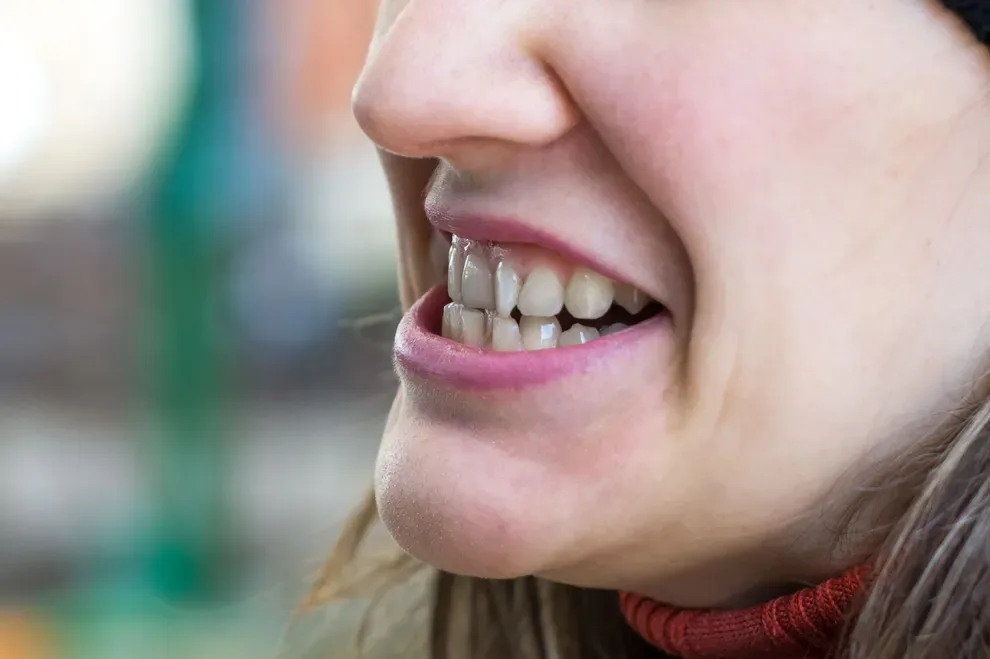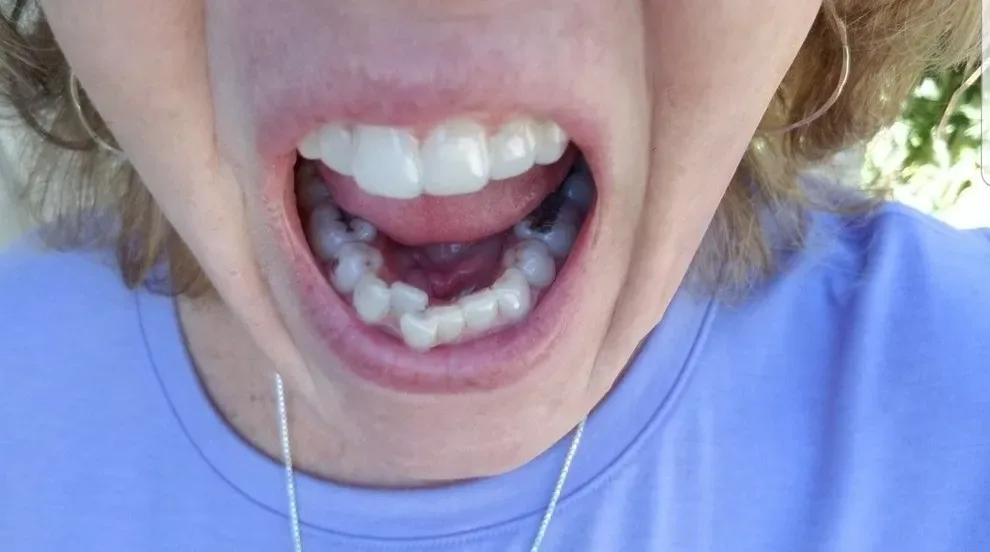Can Overlapping Teeth Be Straightened?

Table of Contents
- Causes
- Importance of Fixing Teeth
- Fixing Overlapping Teeth
- References
When you stretch your lips into a smile, your teeth crisscross over one another rather than standing next to one another. Your jaw doesn't look anything like the plastic model you see in your dentist's office.
You can't keep your teeth from overlapping. A combination of genetics and lifestyle is typically responsible for crooked teeth. But fixing the problem is critical, as your dental health and self-esteem could suffer the longer you wait.
Whether you have several overlapping teeth or just one, the problem can be fixed. You can use clear aligners to gently pull your teeth into their ideal positions. In severe cases, your dental treatment team may choose braces instead.
Causes of Overlapping Teeth
Teeth can overlap in a few ways, either horizontally or vertically, which both can cause a variety of dental issues. Overlapping teeth is not a condition that can be avoided, as the situation generally involves more than one cause.
Overlapping teeth can be caused by numerous factors.
Genetics: Jaw and tooth shape and size are often hereditary and passed down within families. Misaligned jaws as well as abnormal bite patterns, impaction, and overcrowding can all play a role in overlapping teeth.
Birth defects: The shape of the jaw or teeth can be impacted by certain conditions, such as cleft palate and lip, which are present at birth and can lead to dental concerns like overlapping teeth. Children born with extra teeth or abnormally shaped teeth can also have them overlap.
Childhood habits: Things like thumb sucking and prolonged use of a bottle and/or pacifier can all contribute to teeth misalignment and overlapping.
Tumors: Tumors that form within the jaw or mouth can cause teeth to be pushed out of position and overlap.
Improperly placed dental appliances: Dental appliances, braces, retainers, crowns, or fillings that do not fit properly or have moved out of the intended positions can actually push your teeth to overlap and become misaligned.
Trauma: Injury that causes jaw fractures and misalignments as well as lost teeth can account for teeth overlapping.
Overlapping teeth can be caused by multiple factors. The situation is often influenced by a combination of environmental factors and hereditary ones. It is not generally a condition that can be avoided if someone is predisposed to misalignments, but it is something that can be fixed with proper treatment.

Why Fixing Teeth Is Important
Healthy, straight teeth make eating both easy and free from pain. Straight teeth are easier to clean too, and they can help you make a good first impression professionally and socially.
Experts say that crowded, crooked teeth can lead to health problems such as these:
Cavities: It's hard to brush and floss between overlapping teeth. Plaque and bacteria can build up, leading to cavities between the teeth.
Gum disease: The structures that surround your teeth are also vulnerable to bacteria. When you can't clean adequately, colonies can grow and destabilize your teeth.
Intense dental appointments: When you can't perform thorough at-home cleanings, your hygienist must help. You may spend long hours in the chair enduring scrapings and polishing.
Crowded teeth can trap food particles, and that can leave your breath smelling rancid and unclean. Despite your best efforts to keep things tidy within your mouth, your teeth will work against you if they are crooked and crowded.
Your smile is one of the first things people notice about you, and crooked teeth can lead to misunderstandings. More than 75 percent of Americans say people with crooked teeth are more likely to be unsuccessful. Some people won't date potential romantic partners with overlapping teeth.
Braces are very strong tools that can do the heavy lifting of a significant smile correction, but they can be uncomfortable, and they're often much more expensive than aligners.
Main Methods to Fix Overlapping Teeth
People with crowded teeth aren't doomed to live with the problem forever. Dental experts have a deep understanding of why overlapping teeth occur, and plenty of solutions are available.
Mild to moderate cases of overlapping teeth benefit from aligner therapy, which involves:
Assessment. You take impressions of your teeth. Professionals measure your jaw, your teeth, and your smile. They determine which teeth should move and at what pace.
Printing. The team creates a series of aligner trays that gently tug teeth into proper positions.
Therapy. Every week or so, you trade an old aligner for a new one. Each one represents a step toward your straighter smile.
Supervision. Medical teams watch over your progress and ensure your therapy is moving smoothly.
You don’t have to leave your home to get on this journey to a straighter smile. Doctor-monitored, at-home aligners mean you can achieve straight teeth without visiting an orthodontist regularly. Your clear teeth aligners are mailed to you, and you replace the trays according to the specifications of your treatment plan.
At-home aligners often achieve results in a much shorter timeframe than traditional aligners or braces. They are also remarkably less expensive. If you’re a good candidate, they can offer you the best path to aligned teeth.
People with remarkably crooked teeth may need more help than aligners can provide. These people may need to have teeth pulled from their jaw to make space for a straight smile. And their teeth may require significant pressure to move into the right spots.
Some people blend braces and aligners. They use braces in the early stages, and when their smile is almost perfected, they switch to aligners. But this isn't right for every smile.
